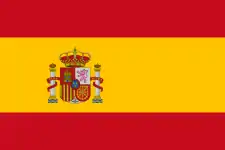Eugene Green Energy Standard
The Eugene Green Energy Standard was an international standard to which national or international green electricity labelling schemes could be accredited to confirm that they provide genuine environmental benefits. It was designed to encourage the generation and use of additional renewable energy sources for electricity generation, although the limited use of additional natural gas-fired cogeneration plant was also supported.[1] Initially funded in part through the EU's clean-e programme, but also including some participants from outside Europe, the Eugene standard was formally discontinued after February 2009.[2]

Dismantling
On 2 February 2009, EUGENE’s General Assembly voted in favour of its dismantling. It was agreed that the members and board would continue to work together to promote green energy in Europe, but that the EUGENE standard and the association (ASBL) under Belgian law would cease to exist.[3]
The standard
The standard confirmed that energy supplied under the accredited schemes:[4]
- Is produced from genuinely sustainable energy sources.
- Will result in a real increase in renewable generation beyond the requirements imposed by government ('additionality').
- That the demand from consumers is matched by renewable generation.
Two variations of the standard, 'gold' and 'silver', differentiated between schemes depending on the additionality of new renewable energy supplied. The development of the standard was aided by the European Union's CLEAN-E initiative during 2005 and 2006[5][6]
Accredited energy labels
National energy labels formerly accredited by EUGENE included:[7]
The organisation also recommends certain other national schemes that are progressing towards accreditation, including:[8]
There was no Eugene accredited scheme in the United Kingdom. The UK's energy regulator (Ofgem) published guidelines in February 2009 that broadly followed the EUGENE standard, requiring matching and additionality through carbon savings, although allowing the latter to be met through energy efficiency or offsetting, as well as through new renewables schemes.[9] These were implemented in February 2010 in the UK's Green Energy Supply Certification Scheme.
The Eugene Standard had also been adopted in Chile,[10] while a pilot scheme is in progress in France.
The Eugene Network
The standard was managed by the Eugene Network (formerly the European Green Electricity Network), an international membership-based non-profit organization. The Network aimed to coordinate and harmonise green energy labelling nationally and internationally, promote the adoption of the Eugene Standard as the basis for national and international green energy markets, and encourage consumers and suppliers to choose credible green energy products. Formal discussions on the Eugene standard first took place in 2000, led by the World Wide Fund for Nature, and it was officially launched on June 24, 2002.[11] The Eugene Network was legally established in 2003 and the first national energy labels were accredited in 2004.[12]
Full voting membership of the Network was open to 'citizen organisations pursuing not for profit activities with the objectives of promoting green electricity but with no direct interests in the generation and supply of energy services'. Organisations outside this scope but which do 'have a commitment and interest in creating a viable green energy market' were able to become non-voting associate members or supporters.[13]
As of June 2007, the members of the Eugene Network were:[14]
- World Wide Fund for Nature
 Chile: Instituto de Ecología Política
Chile: Instituto de Ecología Política  Finland: Finnish Association for Nature Conservation
Finland: Finnish Association for Nature Conservation  France: Comité de Liaison Energies Renouvelables
France: Comité de Liaison Energies Renouvelables  Germany: EnergieVision
Germany: EnergieVision  Spain: Asociacion para la Defensa de la Naturaleza
Spain: Asociacion para la Defensa de la Naturaleza  Sweden: Swedish Society for Nature Conservation
Sweden: Swedish Society for Nature Conservation  Switzerland: Association for Environmental Friendly Electricity (VUE)
Switzerland: Association for Environmental Friendly Electricity (VUE)  Switzerland: Swiss Federal Institute for Environmental Science and Technology (EAWAG)
Switzerland: Swiss Federal Institute for Environmental Science and Technology (EAWAG)
See also
References
- Eugene Standard - Technical Document, Eugene, accessed 2007-06-07
- Eugene Standard - Letter from Board about dismantling Archived 2011-07-19 at the Wayback Machine, Eugene, accessed 2010-02-26
- Eugene Standard - Letter from Board about dismantling Archived 2011-07-19 at the Wayback Machine, Eugene, accessed 2010-02-26
- Vision, Eugene, accessed 2007-06-07
- CLEAN-E project has supported Eugene, Eugene, accessed 2007-06-07
- Intelligent Energy Europe Archived 2007-06-03 at the Wayback Machine, European Commission, accessed 2007-06-07
- Certify your product, Eugene, accessed 2007-06-07
- The Eugene Standard Archived 2007-02-21 at the Wayback Machine, WWF European Climate Change & Energy Unit, published 2006-05-31, accessed 2007-06-07
- Final Green Supply Guidelines Ofgem, accessed 2010-02-26
- Eugene Standard adopted in Chile, Eugene, published 2004, accessed 2007-06-07
- WWF launches European green energy standard Archived 2007-09-26 at the Wayback Machine, Edie, published 2002-06-26, accessed 2007-06-07
- History, Eugene, accessed 2007-06-07
- Membership, Eugene, accessed 2007-06-07
- List of members, Eugene, accessed 2007-06-07
External links
- GreenLabelsPurchase.net: Eugene
- Present and Future Development of Bra Miljöval-labelled electricity (2005-02-14)
- Additionality in renewable energy
- Association for Environment Conscious Building: The Green Electricity Illusion
- Eugene Standard entry at ecolabelling.org
- In the media
- January 1, 2007, Leonardo Energy: Green Power labels not yet at full power
- October 2, 2002, World Wildlife Fund: Green electricity that really is green